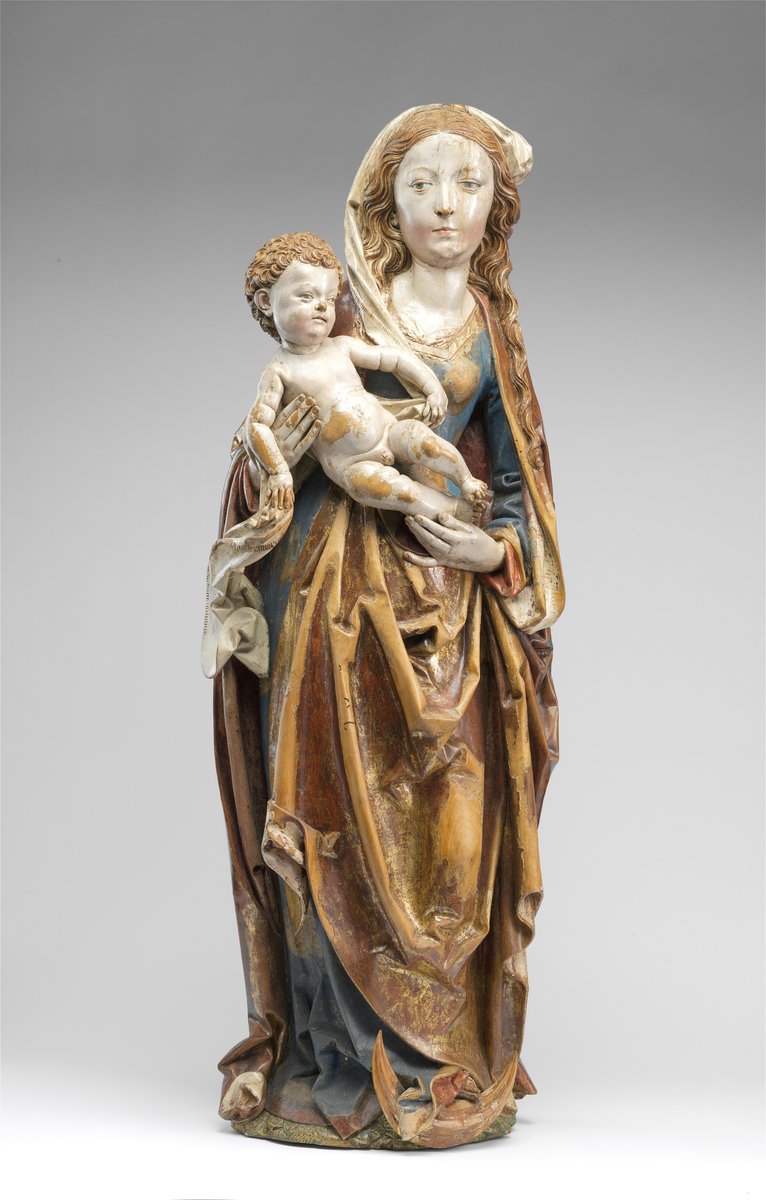
Virgin and Child
Sculptures
The collection of Old Sculpture preserves some 650 works from six centuries of European sculpture spanning from the Middle Ages to the end of the eighteenth century. The exhibition material comprises close to 100 masterpieces of German late Gothic art and the Italian Renaissance as well as by the most important sculptors of the Austrian baroque. Outstanding pieces include Tilman Riemenschneider’s Virgin and Child, the wax Virgin and Child by Jacopo Sansovino, an architect and sculptor born in Florence and active in Venice, and the Character Heads by Franz Xaver Messerschmidt, the extravagant genius of Austrian baroque art.
In addition to showcasing the most famous sculptures found in the Museum of Fine Arts’ collection, the exhibition also provides an insight into the secrets of sculpting. Over many centuries, a range of different materials were used for sculptures and reliefs and many techniques were developed to decorate and paint them. The exhibition seeks to bring these processes as close to visitors as possible.
The Middle Ages saw the emergence of a wide range of techniques used to decorate wooden sculptures. Gilding – which had a symbolic meaning besides its decorative function – was combined with other methods, such as engraving. An excellent example of the latter is the Winged Altarpiece by Jörg Lederer.
A widely employed, versatile material in Italian sculpture from the fifteenth century onwards was clay. The studies of sculptures were typically made of clay and in many cases so were the small-scale models delivered to the commissioners. Luca della Robbia developed the technique of making the glazed version of fired clay, or terracotta, in the early 1440s, and it soon became highly popular in Florence. The Robbia workshop, and later the Buglioni workshop, produced glazed terracotta pieces in large numbers, some of which are displayed at our exhibition.
Clay was not the only raw material used in Renaissance Italy for studies and models: wax was also put to this use. Regrettably, only a small number of wax works have survived, due to the perishable nature of the material, which lends special importance to the exhibition’s rarity: Jacopo Sansovino’s gilded wax Virgin and Child, which the master intended as a model for a marble sculpture.
Casting bronze sculptures and plaques flourished in Renaissance Florence, Venice, and Padua alike. The small bronze titled Rape of Europa, attributed to Andrea Riccio, illustrates the late fifteenth-century development of bronze casting along with the tastes of the humanist circles of Padua at the time.
The Museum of Fine Arts preserves three of the Character Heads, a famed series of busts with grimacing heads, unique in the history of sculpture, made by the extravagant figure of Austrian baroque art, Franz Xaver Messerschmidt. Besides these, the exhibition includes the collection’s other works by the Austrian master, too.
Renaissance small bronzes are now regarded as artworks, although many of them were originally intended as ornate objects of everyday use. One such piece, The Rape of Europa by the sculptor nicknamed Riccio, was originally an incense burner. The smoke it emitted most probably left the object through the mouth of Zeus, who is depicted as a bull abducting the princess struggling to break free.
This Madonna was made by Jacopo Sansovino as a study for a sculpture, and submitted by the artist around 1511 to a competition announced for the marble sculpture to decorate the facade of the Mercato Nuovo in Florence. Although Sansovino did not win the commission, his model for the planned sculpture, made of wax according to the custom of the day, has survived. Since wax is a highly vulnerable material, very few similar pieces have ridden out the storms of the centuries; hence, the Budapest Madonna is a true rarity.
These sculptures made by Franz Xaver Messerschmidt, an extravagant figure of Austrian Baroque art, form a unique ensemble within the Old Sculpture Collection. The collection preserves no less than eleven works by the artist. Three of his Character Heads, a famous series of busts depicting grimaces, unique in the history of sculpture, are preserved in the Museum of Fine Arts alongside the other Messerschmidt sculptures found in the Budapest collection.